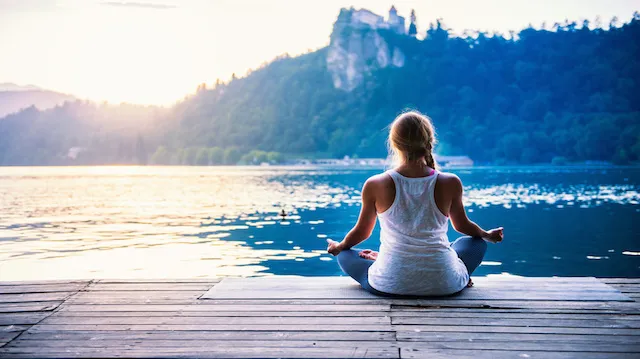Anyone who’s suffered from back pain understands how difficult and uncomfortable life can become when the pain hits. Unfortunately, it’s something that the majority of people face at one time or another. According to the American Chiropractic Association, eight out of 10 Americans will experience back pain at some point in their lives.
However, there are effective ways to prevent back pain, including focusing on developing better posture, strengthening your core, improving flexibility and reducing stress. Or, you could just practice yoga — which does all of these things! Whether you’re looking for a way to alleviate existing back pain, or trying to prevent back pain later in life, practicing yoga is a great option. Here are seven ways yoga heals and prevents back pain.
Yoga helps develop pain-free posture
For many people, the most common pose we do every day is “butt-on-a-chair” pose (FYI: There is a back-friendly way to sit). Leading a sedentary lifestyle day after day destroys many people’s posture, and eventually leads to back pain by putting unnecessary stress on places that weren’t designed to take it, like your neck and lower back. Yoga poses like Tree Pose and Mountain Pose are great for discovering proper posture after years of chronic slouching.
Practicing yoga strengthens the core and back muscles
Another consequence of sitting all day is that the muscles in our core and back become weaker and weaker over time. This habit doesn’t only dash our hopes for a six-pack. It also contributes to back pain and increases our risk for injury by forcing our spine and disks to take on work that our muscles should be doing. Certain yoga moves like Plank, Locust Pose and Boat Pose help to tone and strengthen this area, leaving you with a stronger and less painful back.
Yoga teaches us how to lengthen the spine
Practicing yoga poses that stretch and lengthen your back and neck is another great way to restore proper posture, and decompress and realign your spine. Poses to practice include Downward Facing Dog (with legs slightly bent) and Mountain Pose.
It opens up tight, inflexible areas
Even though pain is in the back, pain isn’t necessarily just relieved by focusing on only the back. Tension and inflexibility in other areas of the body — like the hamstrings and hip flexors — can actually lead to lower back pain. People who might want to target these areas include runners, bikers and, of course, people who sit all day. Yoga poses that release these areas include sitting and standing forward bends (keep your legs bent slightly), as well as Low Lunge and High Lunge.
It improves body awareness
Yoga offers tools to combat back pain even beyond the gains in strength and flexibility that yoga practitioners experience. One of these tools is an increased awareness of the body. The more aware of our bodies we become, the more we can identify the imbalances in our body that need to be resolved and the habits that aggravate and lead to pain. In effect, practicing yoga teaches you how to listen to your body.
It teaches us to breathe properly
No one wants to hear that breathing is one of the things that many of us do wrong, but it’s true! The way we breathe is related to all kinds of things including our posture, our mental health, our stress levels and the way we use our core muscles. Guess what? All of these elements affect back pain. Studies have shown that people with lower back pain tend to brace their diaphragm while breathing. Learning how to practice healthy, ribcage-expanding, diaphragmatic breathing through yoga can help to reverse this bad habit, and thus reduce back pain. Here’s more on the benefits of breathing correctly and how to do it.
Conscious relaxation
Most yoga practices end with Savasana, or Corpse Pose. The reason we do this posture at the end of every session is to practice consciously relaxing the body. The deep state of relaxation accessed in Savasana allows your body to release old patterns of clenching and tension, and to integrate new information about the new alignments and ways of holding yourself you’ve explored in your yoga practice. Savasana is also a great way to reduce stress, which can be a huge trigger for chronic pain.
Everyone’s back pain is different, and there is almost always a combination of factors at the root of any one person’s pain. Since every body (and mind) is unique, it’s important to work with a qualified instructor who can teach you how to practice yoga in a way that is safe and effective for you. The best choices are yoga therapists or physical therapists who are also yoga teachers.
—Teresa Manring
Teresa is a freelance writer and yoga teacher currently living in Sri Lanka. She loves to write about policies, ideas, and practices that promote a healthy planet and create healthy people.
Sources:
https://www.nlm.nih.gov/medlineplus/backpain.html
http://www.philly.com/philly/blogs/sportsdoc/Could-how-you-breathe-be-causing-you-back-pain.html

